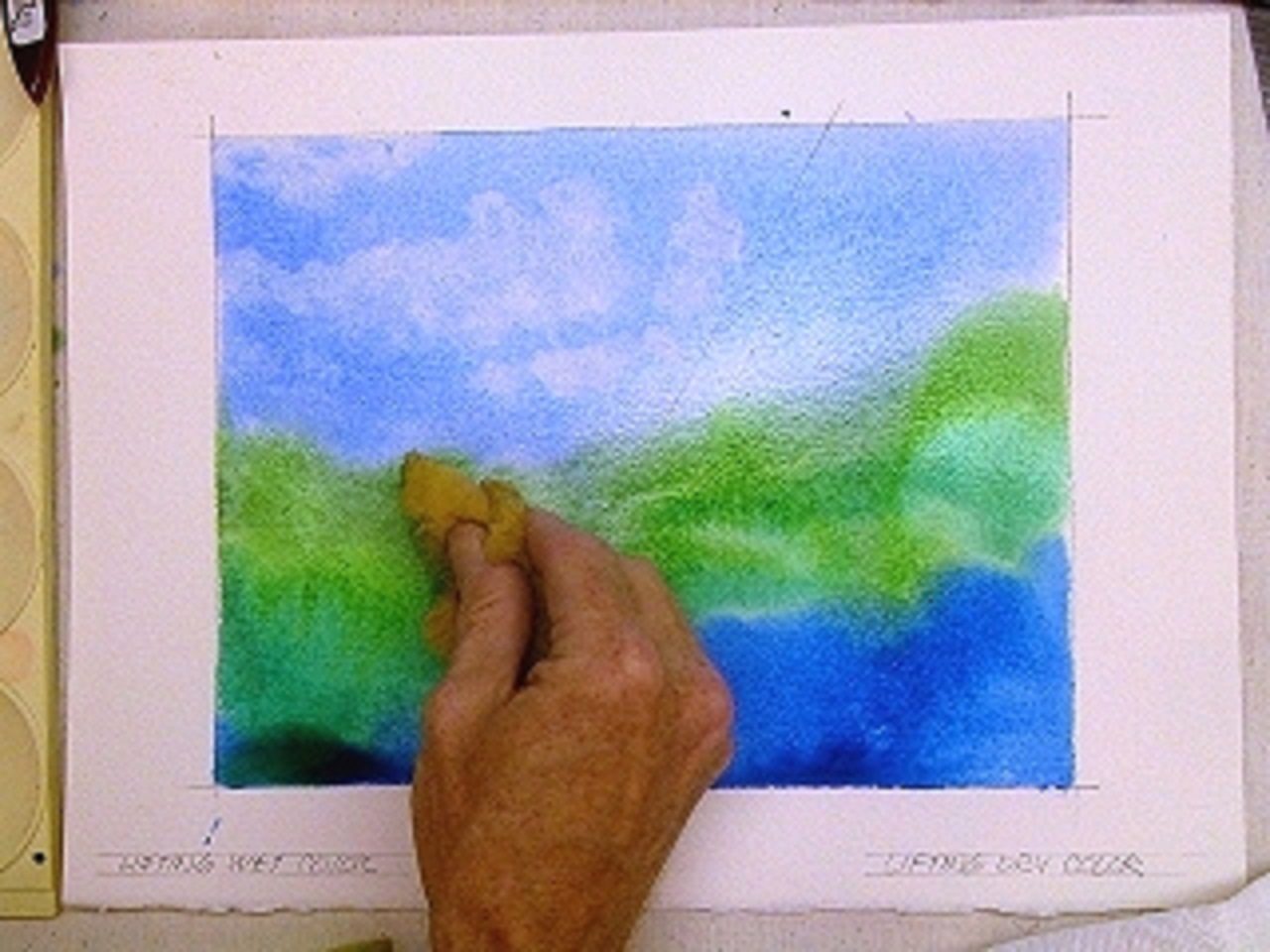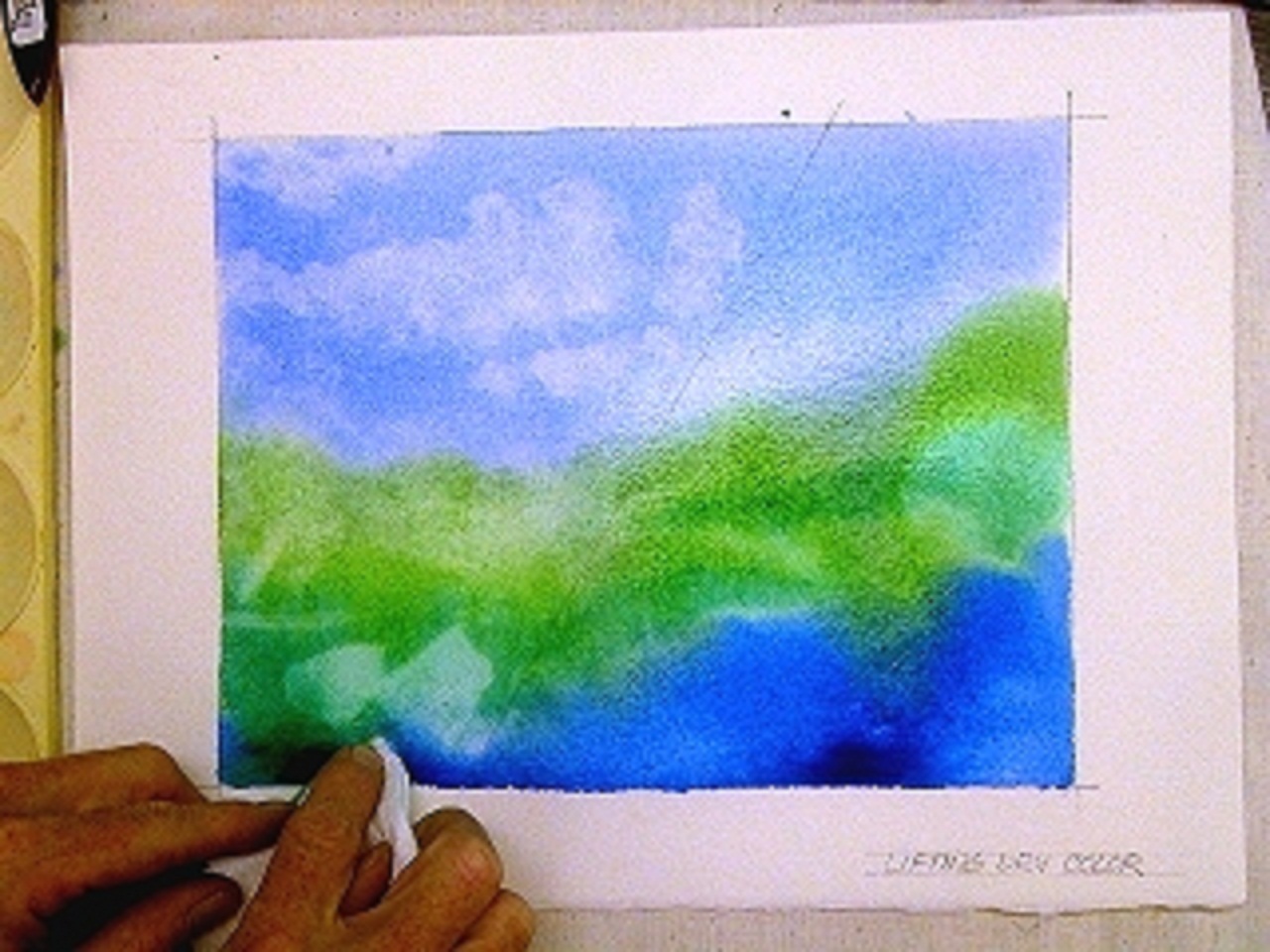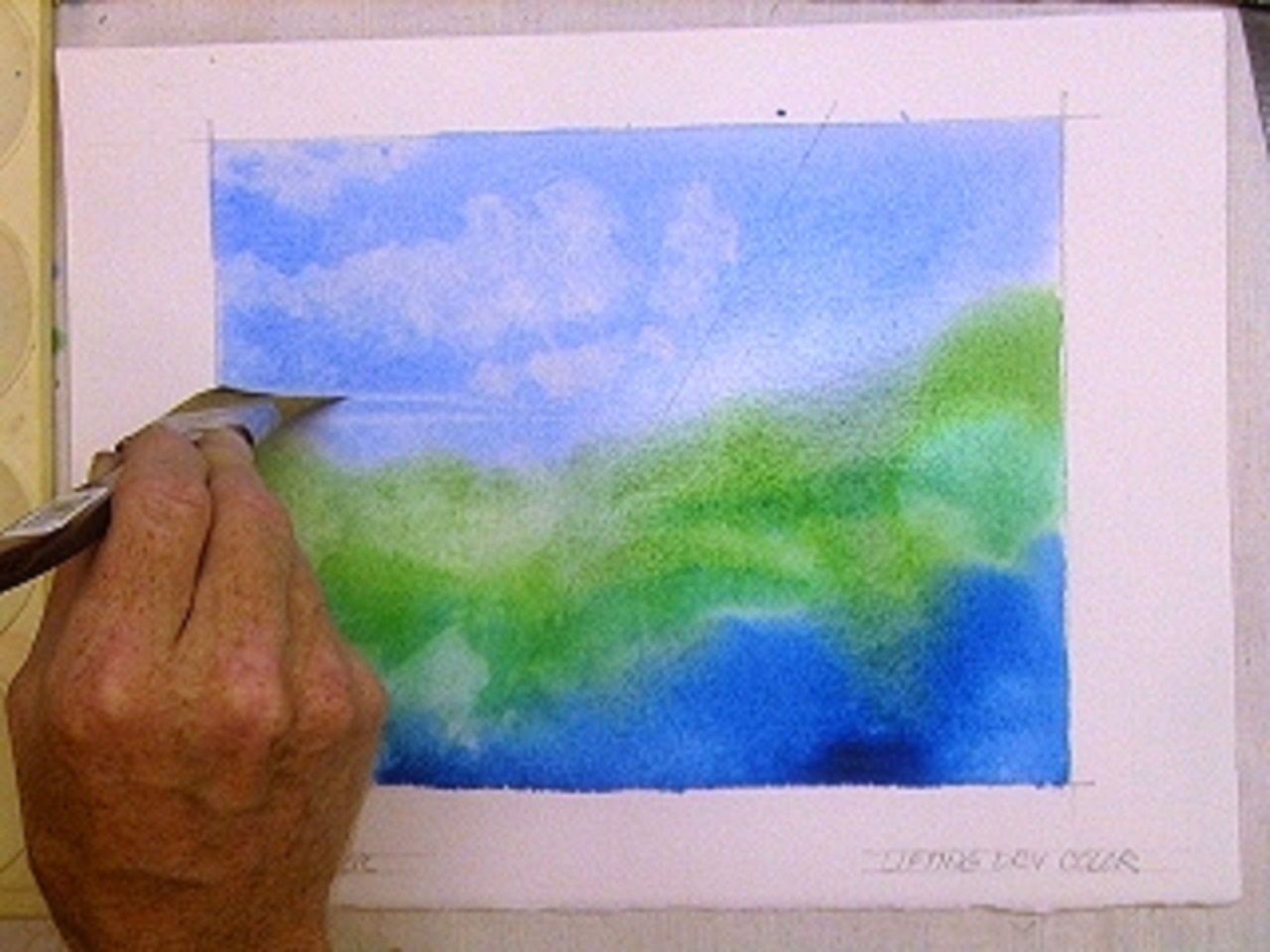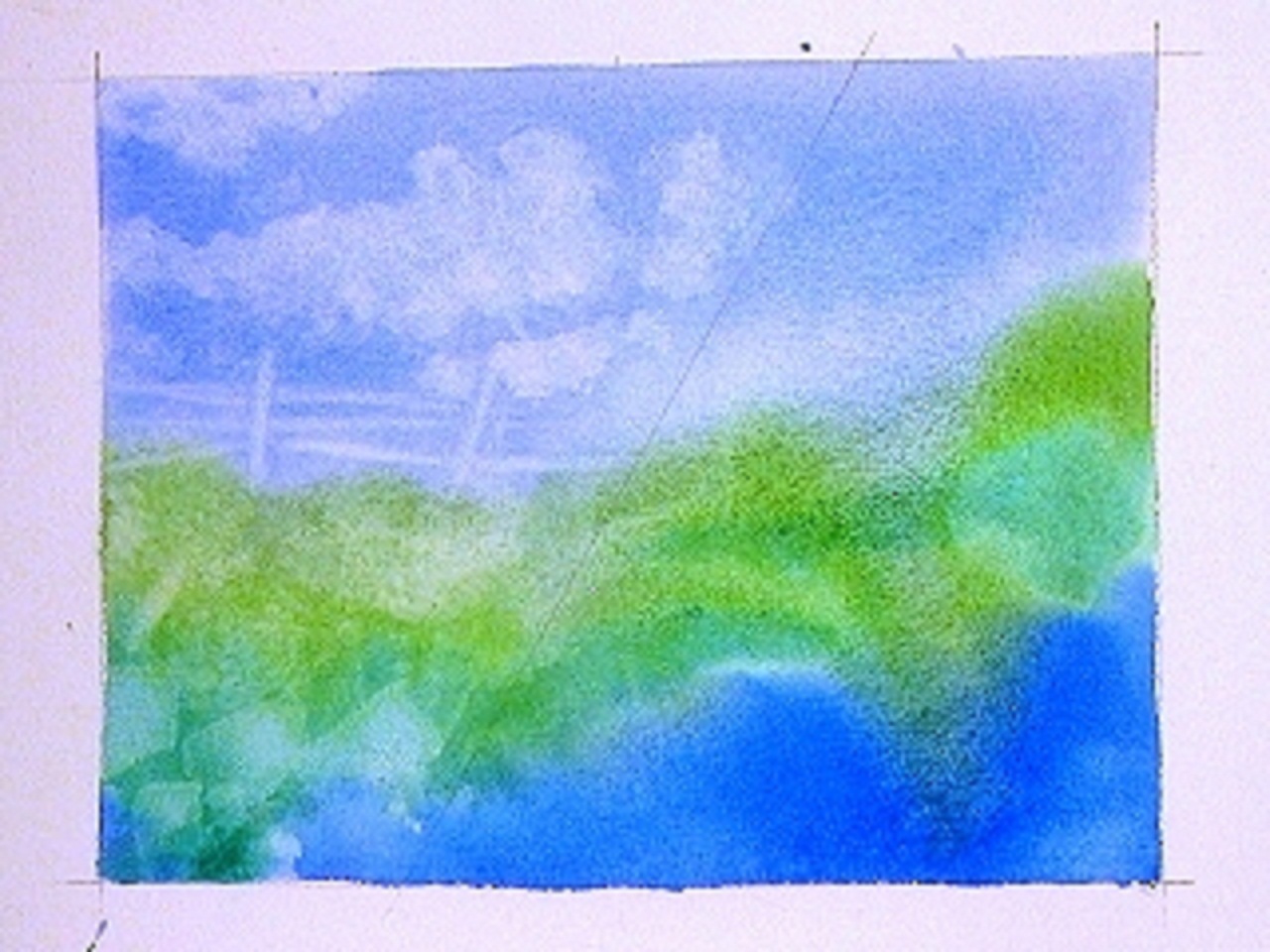*Facial Tissues Required For This Watercolor Technique
Wad up some facial tissues and use them as a negative painting tool. Facial tissues are absorbent and leave a softer-edged impression. Use gentle pressing and twisting, or a dabbing motion. If you try to scrub with a facial tissue, most will fall apart and soil your washes. Excellent for clouds, soft lighting effects, and puddle control as you paint. You can use toilet paper but that's gross and most brands fall to pieces or leave lint all over your painting. Good for blotting brushes (Zoltan Szabo), but leave it on the roll.
It's a Sponge, Bob.
In the band of green in the middle-ground, I used a wrung-out natural seasponge. Natural sponges will lighten a watercolor wash in a little more dispersed and textured manner. Light texture will be more pronounced if color is lifted as the wash is getting drier. You CAN scrub your paper with a natural sponge, just watch out for paper damage. Synthetic cellulose sponges abound in my studio. They can blot large areas (and your brushes) quickly and can be cut into any shape you need.
Paper Towels
Here, I blot some simple shapes with a folded paper towel to lighten the foreground. Paper towels can impart an more angular and mechanical texture as you blot a wash. Paper towels can suck up a lot of paint VERY quickly. A large fresh wash of non-staining (i.e. usually paints that are made of natural rather than chemical pigments) color can be completely removed at times. If you lay a glaze over another wash and it was a mistake, quickly lay a flat section of paper towel down and blot the entire wash up before it has time to affect the underlying wash.
Negative Brushwork
The brushes you put the paint down with can also be used to pick the paint up. Rinse clean and squeeze out excess water. Your brush will wick up the wet paint. Using a damp 1½" wash brush, I blotted the brush to keep its edge. Sweeping back and forth, I pick up the color with the edge of the brush, blot the brush dry, and pick up some more. I "drew" in a line of fence thingies.
The Finished Lifts
Click the photo to enlarge and see the results of the wet lifting watercolor techniques described above. Other techniques for lifting wet color I've used:
- Spraying water to wash away areas of color.
- Using various absorbent fabrics and towels.
- My hands or parts thereof. Your skin can pick up color like a stamp pad. You'll leave personal textures. DON'T PICK UP TOXIC COLORS IN THIS MANNER! (and don't use your tongue either, duh...)
- Several cats in my lifetime have lifted paw prints out of a wet wash.
- Sgrafitto techniques will scrape away color but bruise the paper in the process.







